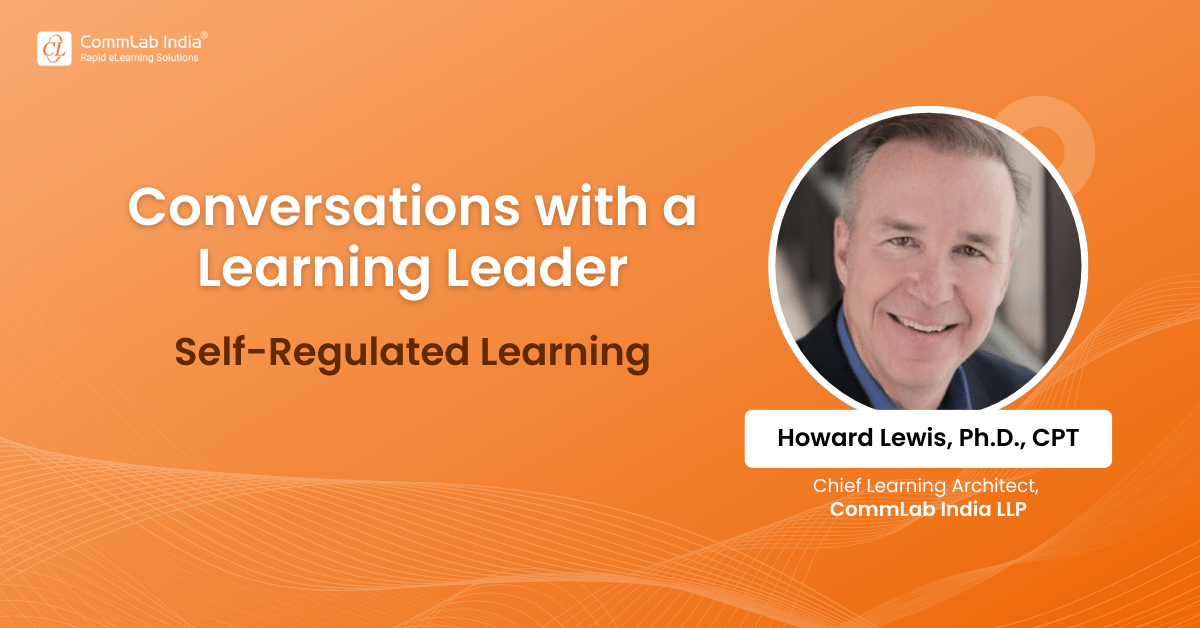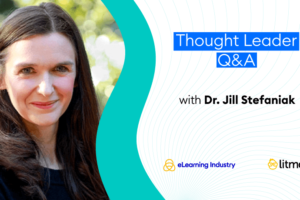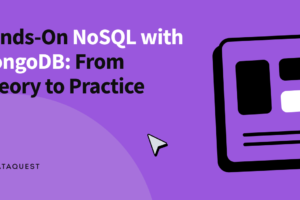
Self-Regulated Learning: Learn. Reflect. Succeed.
In a world of constant change, the ability to learn effectively on your own is a superpower. But how do we become masters of our own learning journey? This question was the focus of a popular session at LearnFlux 2025, a 3-day virtual summit hosted by CommLab India that brings together global L&D thought leaders.
This session, led by Howard Lewis, Ph.D., CPT, Chief Learning Architect at CommLab India, offered a deep dive into the practice of self-regulated learning.
This blog captures the essential insights from his masterclass, providing a clear roadmap for learners to take control of their growth and for L&D professionals to design more empowering learning experiences.
By reading this blog, you will understand what self-regulated learning is, why it matters, and how to apply a simple yet powerful framework to foster it in any learning environment—from corporate onboarding to technical training.
Table Of Content
What is Self-Regulated Learning?
Self-regulated learning is a proactive process where individuals take charge of their own learning journey. As Dr. Howard explained, it’s about “creating better, more durable learners.” Instead of passively receiving instruction, self-regulated learners actively set goals, choose learning strategies, monitor their progress, and reflect on their results to improve future learning.
This process involves a combination of:
- Cognitive strategies: How you process information.
- Metacognitive strategies: How you think about your own thinking.
- Motivational beliefs: Your personal drive and confidence.
- Behavioral techniques: The actions you take to manage your learning.

Why is Self-Regulated Learning Important?
Investing effort into self-regulated learning offers significant advantages for both individuals and organizations. It moves beyond simple course completion to foster genuine skill development and long-term application. Several key benefits are highlighted here that directly translate to workplace success.
1. Aligns with Business Goals: The goal-setting component of self-regulated learning helps employees align their personal development with key performance indicators (KPIs) and organizational objectives.
2. Promotes Independence: By monitoring their own progress, learners become more independent, capable of troubleshooting problems and investing in their continuous improvement without constant oversight.
3. Drives Knowledge Transfer: The act of reflection solidifies learning. It’s the bridge that connects knowing something to applying it, enabling the transfer from short-term memory to long-term retention and real-world performance.
4. Increases Motivation and Engagement: When learners have autonomy over their development, their engagement and motivation naturally increase, which can help reduce learning fatigue.
5. Enhances Coaching and Feedback: Self-regulated learners are better equipped to engage with feedback, turning coaching conversations into more effective, targeted discussions about performance and growth.
6. Builds a Resilient Workforce: In an environment of constant change, creating better learners is crucial. Employees who are adept at self-regulated learning are more resilient and proactive in their own upskilling, better able to adapt to new challenges and technologies.
How Can We Dispel Common Myths About Self-Regulated Learning?
To gain support from stakeholders, it’s important to address and reframe common misconceptions about this approach. Dr. Howard identified several myths and offered practical ways to reframe them.
Myth #1: It’s unstructured and chaotic.
Reality: Self-regulated learning isn’t about leaving learners to fend for themselves. It uses a structured framework and “guided independence” with built-in checkpoints to support development and build autonomy.
Myth #2: It’s only for high-performing or advanced learners.
Reality: Everyone can benefit from these techniques. It’s a durable skill that helps individuals at all levels become more efficient and effective learners, which is critical as processes and technologies constantly evolve.
Myth #3: It replaces the need for facilitators or formal training.
Reality: This approach doesn’t eliminate the role of structured training. Instead, it enhances it by empowering learners to take a more active role within that structure. The facilitator becomes a guide who supports this process.
Myth #4: It takes too long and slows down training completion.
Reality: The goal is meaningful impact, not just tracking completion. By focusing on planning, monitoring, and reflecting, self-regulated learning drives knowledge transfer and improves on-the-job performance. Many techniques, like micro-prompts, take only a few minutes to implement.
What is a Simple Framework for Self-Regulated Learning?
Dr. Howard presented a powerful, cyclical framework that can be applied to any learning situation. It consists of three core phases: planning, monitoring, and reflecting.
1. Planning (The Forethought Phase)
This is the preparatory phase before learning begins. It involves:
- Setting specific learning goals: What do you want to achieve?
- Choosing strategies and resources: How will you approach the material?
- Anticipating challenges: What obstacles might you face, and how can you overcome them?
2. Monitoring (The Performance Phase)
This phase occurs during the learning activity itself. It involves:
- Applying the chosen strategies: Putting your plan into action.
- Tracking your progress: Are you on track to meet your goals?
- Self-questioning and adjusting: Making real-time changes to your approach as needed.
3. Reflecting (The Self-Reflection Phase)
This final phase takes place after the learning activity. It involves:
- Comparing outcomes to goals: Did you achieve what you set out to do?
- Identifying effective strategies: What worked well, and what didn’t?
- Adjusting future plans: Using these insights to become a better learner next time.

How Can We Apply This in Learning Design?
Integrating self-regulated learning into digital experiences like eLearning and microlearning doesn’t require a massive overhaul. Dr. Howard emphasized using subtle but powerful techniques woven directly into the design.
For example:
During the Planning Phase: Use a pop-up at the start of a module asking, “What is one thing you want to get out of this session?” You could also provide a downloadable checklist or goal-setting template.
During the Monitoring Phase: Insert periodic checkpoints with questions like, “How confident are you feeling so far?” or “What’s working well for you?” This encourages learners to pause and assess their progress.
During the Reflection Phase: End modules with a prompt like, “What is one action you will take based on what you’ve learned?” Providing a digital reflection card can help formalize this step and close the learning loop.
Your Next Step: Become a Self-Regulated Learner
Fostering self-regulated learning is one of the most impactful investments an organization can make. It builds a workforce that is not only knowledgeable but also adaptable, motivated, and capable of driving its own growth. By embedding the principles of planning, monitoring, and reflecting into our learning designs, we can move beyond simply delivering content and start empowering people.
Ready to put these ideas into practice? Start by applying the three-phase framework to your own next learning task. Set a clear goal, monitor your approach, and take a few moments to reflect on what you learned. You might be surprised at the difference it makes.




